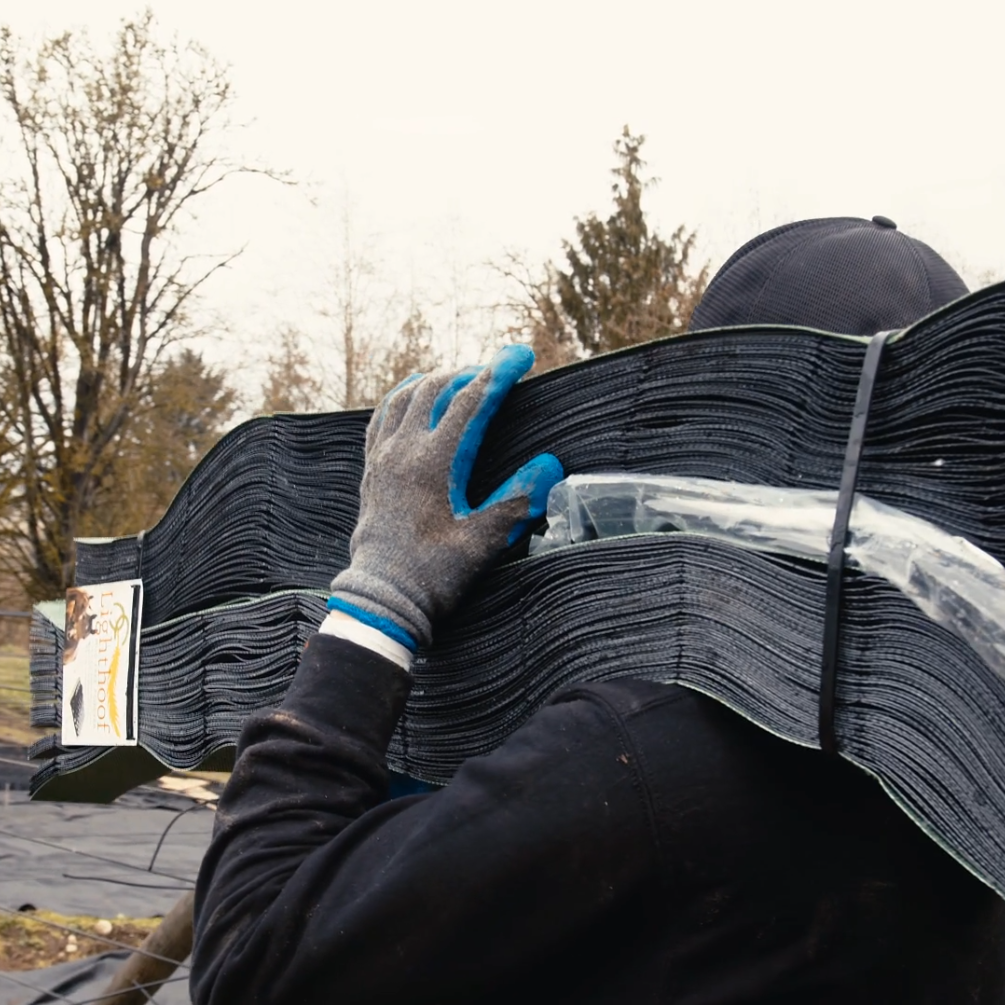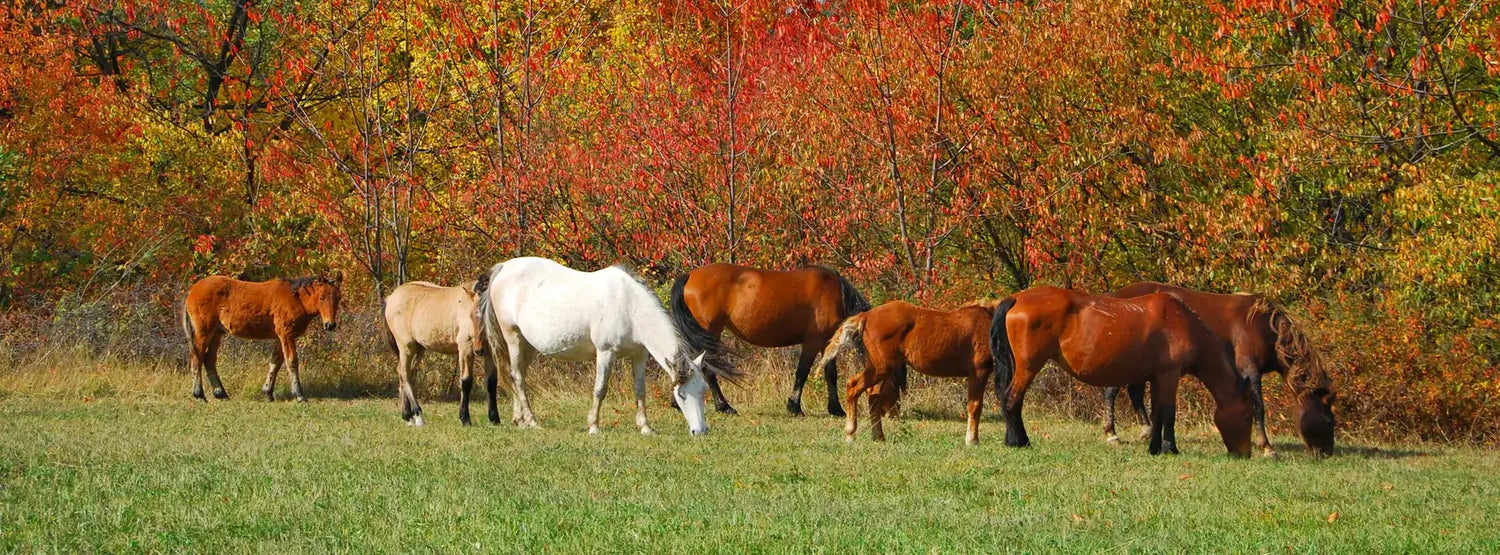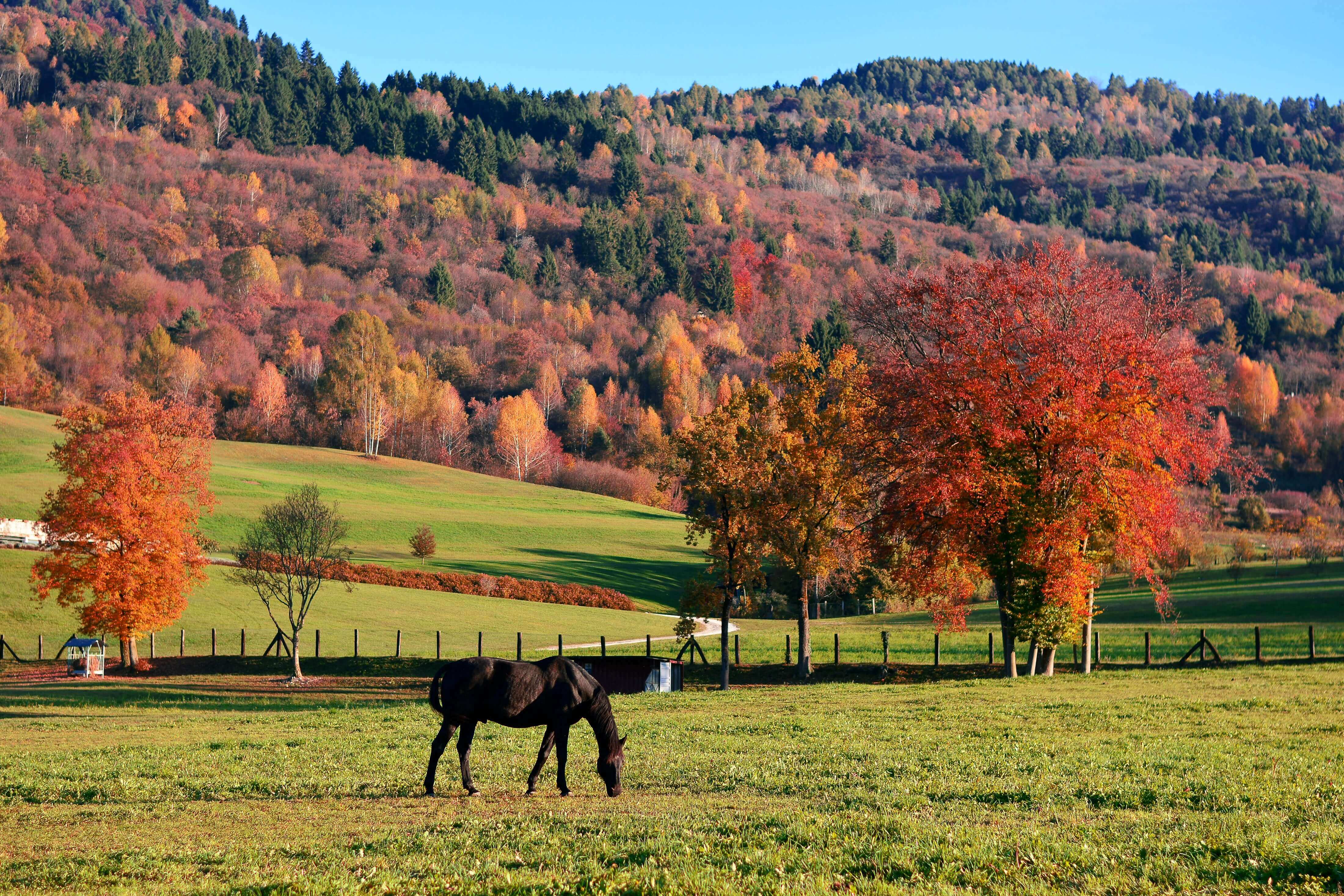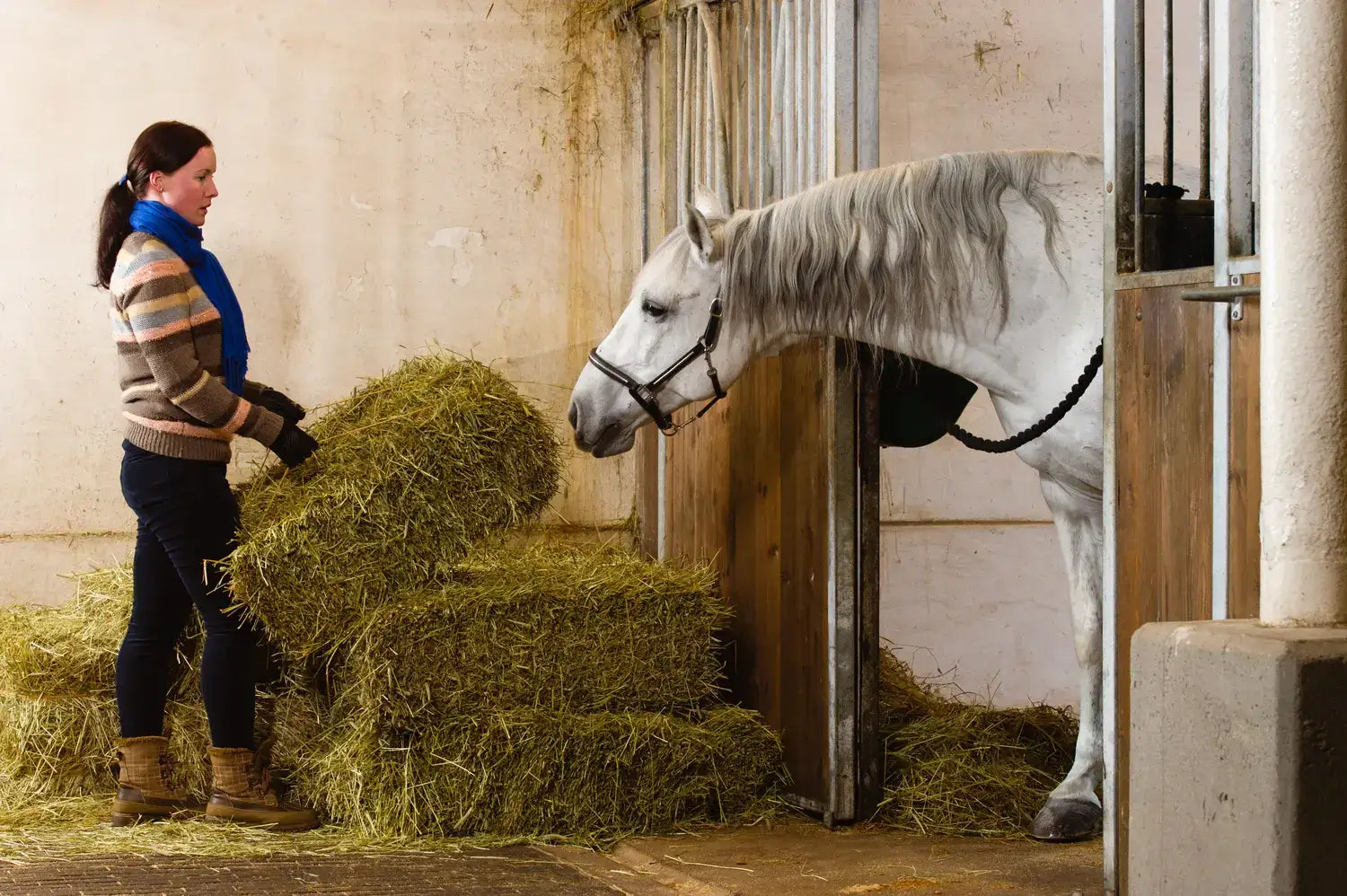Are your horse pastures looking tired? The fall can be the perfect time to give them the extra attention that they need, so they’re lush and ready to support your horses again in the spring. Fall pasture management is a great investment to make in your farm, and by promoting grass growth and pasture health, you can help to avoid mud, erosion issues, and other problems that come with overgrazed pastures.
Top Fall Pasture Management Strategies for Horse Farms
Now is the perfect time to consider these fall pasture management strategies.
Address Drainage Issues
Before you focus on reseeding and fertilizing pastures, identify any drainage issues and address those areas. Often, high-traffic areas around gates and water troughs are plagued with mud during wet months. Addressing this problem can require the use of a tractor and other heavy machinery, so do this before you reseed.
Lighthoof panels can help to fix recurring mud issues. These panels help to stabilize the ground in areas that see high hoof traffic. They’re durable and designed specifically for use with horses, so you can install them under and around pasture gates and in other areas where mud is a problem.
Lime and Fertilize Pastures
You can give your pasture health a boost by fertilizing and liming the areas, sometimes referred to as pasture restoration. Before you start spreading fertilizer and lime, test your soil to determine just what your pasture needs.
According to the Snohomish Conservation District, treating your pasture with lime helps neutralize the soil, resulting in a higher pH reading. Soil that is too acidic will have fewer nutrients available to your grass, resulting in less growth and poor-quality pastures. Because lime can take three to four months before it fully affects the soil, it’s ideal to apply it in the fall so you’ll see its effects in the spring. The results of your soil testing can help you to gauge just how much lime you’ll need to apply to get your soil to an ideal pH.
Your fertilizing strategy will also depend on the results of your soil testing. According to eXtension, fertilizers contain varying amounts of nitrogen, phosphate, and potash. Many pastures need more nitrogen than the other elements, so you may do best with a nitrogen-only fertilizer. Again, soil testing will help you to decide what’s best for your pasture.
Reseed Pastures
In addition to putting down lime and fertilizer, reseeding your pastures can restore overgrazed and tired pastures. By reseeding in the fall, your seed will have time to take hold and develop a strong root system before you turn your horses out on them again in the spring. In the meantime, put your horses into another pasture through the winter.
Address Weeds
If too many weeds are taking hold in pastures, this is the time to implement some weed control strategies. Mowing weeds before you seed your pastures can help those seeds to grow, preventing weeds from choking the new seeds out. Herbicides can also be useful.
It’s easy to see the types of weeds that are present in your pasture in the fall. Take the time to identify the most prevalent weeds, then consider the best removal process for these types of weeds. Your local Cooperative Extension can provide you with detailed information on the best methods and times of the year for species-specific weed removal, so you can develop a plan that’s appropriate for your pastures.
Investing in Fall Pasture Management
Fall pasture management requires both time and money, but it’s an investment that will pay off in the spring and summer. With healthy, quality pastures, you can potentially save on hay costs. You’ll also have the satisfaction of knowing that your horses can graze on quality forage.





Leave a comment
This site is protected by hCaptcha and the hCaptcha Privacy Policy and Terms of Service apply.